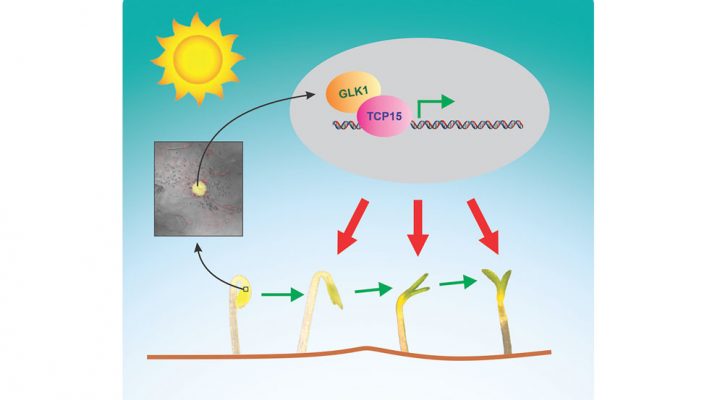BIOLOGICAL AND HEALTH SCIENCES
How do plants respond to light after germination?
CONICET experts discovered that the transcription factors TCP15 and GLK1 form a protein complex that produces the opening of the cotyledons and the development of the photosynthetic apparatus.
The Laboratorio de Biología Molecular del Instituto de Agrobiotecnología del Litoral (IAL, CONICET-UNL), led by CONICET researcher Daniel González, is studying a family of plant-exclusive transcription factors called TCP. Transcription factors are proteins located in the nucleus of cells that recognize specific sequences in DNA and modulate gene expression, this means that, they “activate” or “deactivate” genes. TCP proteins are involved in the regulation of various processes related to plant growth and development. They participate in germination, flowering, morphogenesis of leaves and floral organs, hormone signaling, defense against pathogens, and responses to changes in light and temperature conditions.
Seeds often germinate in the dark, underground. To deal with this condition, dicotyledonous plants such as Arabidopsis thaliana – a wild plant used as a study model – have adopted a developmental strategy known as etiolation in which the seedling quickly elongates the hypocotyl (embryonic stem) upwards and keeps the cotyledons (embryonic leaves) closed one on top of the other without accumulating chlorophyll, which is accompanied by the formation of a hook at the top of the stem (apical hook) . This way of growth aims to protect the meristem, tissue that will later give rise to the other organs, from mechanical damage as the seedling passes through the soil. Once these organs emerge and perceive light, de-etiolation occurs: the apical hook unfolds and the elongation of the hypocotyl is greatly reduced, while the embryonic leaves separate and expand to develop their photosynthetic capacity. These processes, which allow the seedling to successfully emerge from the soil and survive the transition from dark to light, are essential for plant establishment in natural environmental conditions.
A recent study led by CONICET researcher Ivana Viola confirmed that the transcription factors TCP14 and TCP15 of Arabidopsis thaliana are responsible for activating the expression of genes involved in cell expansion and the development of the photosynthetic apparatus, so that the opening and development of cotyledons. Through various molecular and genetic studies, it was possible to determine that TCP15 interacts with the transcription factor GLK1 and that these protein complexes are necessary for these proteins to bind to specific regions of DNA and induce the expression of genes that promote the opening of embryonic leaves.The study was published in The Plant Journal.
The team led previous studies that describe the mode of action of TCP proteins. “We know that they are part of very complex molecular networks. These transcription factors control a wide variety of processes through the recruitment of other proteins and the modulation of different hormonal pathways, acting as growth regulators and mediators of developmental responses to both internal and environmental signals,” Viola says.
TCP proteins work as a team. Knowing their modus operandi, the members of the research group were able to start a search for transcription factors capable of interacting with TCP proteins to obtain new evidence on their role in the development of Arabidopsis. Through a methodology that allows identifying the interaction between proteins, GLK1, which belongs to another family of transcription factors, was detected. The team established that these protein complexes are essential during de-etiolation, the first growth and development process of the plant against light. “We found that during dark growth TCP15 is present in the cotyledons, but GLK1 expression is repressed, so these complexes cannot form and the cotyledons remain closed. When the seedling is exposed to light, the levels of GLK1 in the cotyledons increase and the TCP15-GLK1 complexes bind to the promoters of cell expansion and photosynthesis genes, activating their expression and photomorphogenic development in the cotyledons”, Viola explains.
These discoveries open the door to further studies on these proteins of interest. “The proteins of the TCP family were identified around the year 2000. Since then, the study of their function has advanced a lot. In 2008, we began to study the members of this family and the mechanisms they use to interact with DNA, the molecular networks they participate in, the role they play in plant development and in responses to changes in conditions of light and temperature”, says Viola and her team who are currently analyzing the function of TCP proteins after germination when environmental conditions are adverse.
Área de Comunicación del Instituto de Agrobiotecnología del Litoral (IAL, CONICET-UNL).
